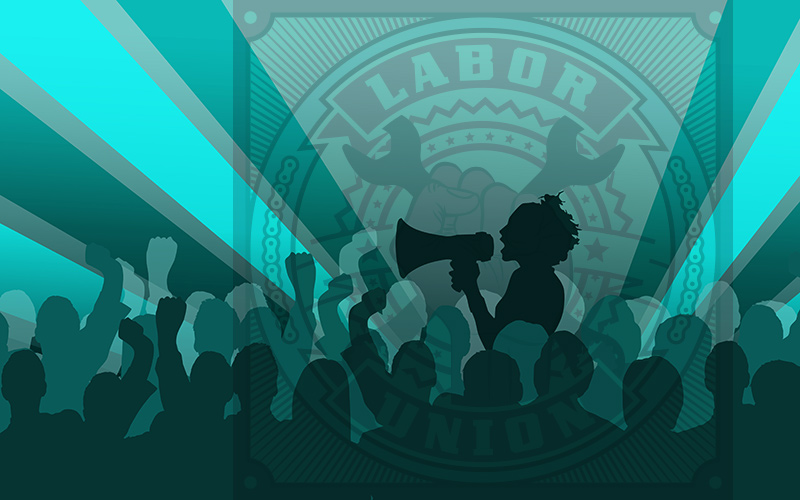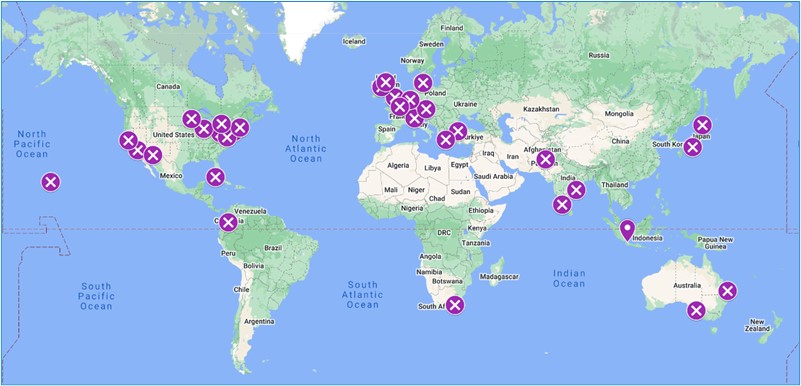
International Labor Day: Protests, Unrest, and Business Continuity
By TorchStone Senior Intelligence Analyst Ben West and Intelligence Analyst Mare Cunningham
The United States celebrates Labor Day the first Monday of September, but the rest of the world (along with many U.S. activists) recognize May 1 as Labor Day.
Protests and labor actions are common around the world on May 1 and, while most remain peaceful, they occasionally become violent.
Organizations in the United States and especially abroad should work now to assess the threat of protests and consider best responses.
A Brief History
May 1 has been associated with large gatherings to celebrate the return of warm weather in the northern hemisphere for thousands of years.
However, it began taking on a more confrontational tone in the late 19th century following the Haymarket incident in Chicago, IL.
On May 4, 1886, anarchists organized a rally to support workers at McCormick Reaper Works who were striking for an eight-hour workday.
The rally turned lethal after an explosive device detonated amidst advancing police, who opened fire on the gathering.
At least eight people died in the ensuing clash.
Five years later, in 1891, the Second International, consisting of various communist and socialist groups around the world, declared May 1 an international day for the worker, launching the concept of International Labor Day as we know it now.
The United States eventually adopted the first Monday in September as Labor Day to distance itself from communist influence and the violence associated with the roots of International Labor Day,
Present
In the modern era, May Day rallies still promote workers’ rights, including the right to unionize.
But the causes have expanded to include a broad spectrum of issues associated with the political left.
They include immigration rights, anti-war, anti-capitalism, LGBTQ+ rights, environmental issues, and others.
While most May Day protests remain peaceful, there is a precedent of disruptions, property damage, and violence at these events dating all the way back to the Haymarket incident.
May Day protests have the potential to attract the involvement of groups that employ Black Bloc protest tactics.
This involves smaller cells of more radicalized protesters, generally associated with the anarchist or antifa movements, who infiltrate peaceful protests with the aim of instigating violence.
They typically dress in all black, tend to conceal their faces, and carry back packs full of supplies ranging from incendiary devices, blunt weapons, and spray paint.
The presence of Black Bloc elements at a May Day event significantly increases the likelihood of trouble ahead.
In recent years, protests have focused on the adverse effects of lockdowns, increased benefits for essential workers, and hardships associated with inflation/rising cost of living.
Below are some examples of disruptive May Day protests over the previous two years.
In 2021, lingering COVID-19 restrictions dampened the turnout to May Day events in most cities.
- Police in Paris arrested dozens of protesters after 17,000 people demonstrated against changes to unemployment benefits.
- There were clashes with police, broken windows, and small fires.
- About 5,000 protesters marched through Berlin calling for more social equality. They clashed with police, throwing fireworks, bottles, and rocks.
But 2022 saw a return to more normal levels of activity due to concerns over inflation and the rising cost of living.
- AFL-CIO associated labor organizations rallied in Manhattan targeting locations associated with Starbucks and Amazon in an effort to pressure the companies into allowing workers to unionize.
- Protests in Paris turned violent when demonstrators smashed bank windows and defaced street signs in opposition to President Macron’s successful re-election and anticipated pension reforms. Police responded with tear gas.
- Turkish police arrested 164 people for demonstrating without a permit in Istanbul’s Taksim Square.
- In India, sex workers in Kolkota rallied to decriminalize sex work and trade unions held rallies across multiple cities.
May Day 2023
Looking ahead to May Day 2023, environmental activism, controversial legislation, and high-profile incidents of gun violence have driven protest activity in recent months and are set to motivate May Day rallies.
A map below shows locations of planned protests as of April 21.
TorchStone expects dozens more protests to be organized over the coming week and plenty of unannounced protests, as well.

Map Showing a Sample of Nationwide May Day Events Planned from April 28 Through May 1, 2023
Labor Actions
Labor union disruptions, particularly in the transportation sector, have been prevalent throughout Europe so far this year, prompting widespread transport and service disruptions.
Apart from France, other European countries including the United Kingdom and Germany have also witnessed a series of strikes and picketing activities leading to the cancellation of flights, delays in supply chains, closure of educational institutions, and service backlogs.
Labor unions have called for protests in the days leading up to May 1.
French Pension Reform and Union Strikes
A succession of civil unrest events erupted in France in January 2023, orchestrated by groups and individuals opposed to President Macron’s the pension reform legislation.
The legislation raises the retirement age from 62 to 64, and has attracted large-scale protests—especially after President Macron used special constitutional powers to push though without a National Assembly vote.
The Constitutional Council announced approval for controversial bill on April 14, triggering another series of nationwide protests in France.
Industries and workers involved in the strikes action include transport, banks, refineries, education, government civil servants, waste management, healthcare, and public safety.
- March 23: Demonstrators ignited the City Hall of Bordeaux, while in central Paris, protesters vandalized bus shelters, billboards, storefronts, resulting in shattered glass and burning rubbish bins scattered throughout the area.
- April 6: Irate demonstrators forcefully entered BlackRock’s Paris office, brandishing red flares and using smoke bombs, while law enforcement deployed tear gas to scatter the crowd. Dozens of protesters also set fire to Paris restaurant La Rotonde known to be a favorite of President Macron.
Environmental Campaigns
Environmental activist groups are known for their direct-action tactics such as targeting specific companies with elaborate props, vandalism, and blocking entrances.
Among a few of the more active groups include Fridays for Future (initiated by activist Greta Thunberg), Extinction Rebellion (UK-based global movement), Dernière Rénovation (Last Renovation, France-based).
- November 18: The group Dernière Rénovation splattered orange paint onto an outdoor sculpture situated in front of the Bourse de Commerce contemporary art museum in central Paris. The activists also engaged in direct action against artwork by Andy Warhol, throwing flour on the piece. This incident took place just two weeks after the same group had used pea soup to deface a Van Gogh painting in Rome.
- February 8: Activists from Alternatiba and Friends of the Earth carried out an anti-capitalist protest by using spray paint to deface the headquarters of TotalEnergies in the business district of west Paris.
Recent Legislation and Violence
Legislation recently enacted or introduced to include abortion laws, LGBTQ+, and firearms as well as mass shooting incidents have all been catalysts for frequent demonstrations, civil unrest, and protests across the United States.
- June 2022: After the U.S. Supreme Court reversed Roe v. Wade and ruled that each state will set their own abortion policies without any federal constitutional standards, activists continue to stage widespread “Bans Off Our Bodies” demonstrations.
- March 2: Tennessee became the first U.S. state to pass a bill prohibiting “adult cabaret performances” from taking place within 1,000 feet of schools, public parks or places of worship sparking nationwide protests from the LGBTQ+ and the political left individuals.
- March 30: Hundreds of gun control activists invaded the Tennessee State Capitol disrupting a legislative session by shouting and using bullhorns. The same day, transgender activists staged a protest at the Kentucky State Capitol against proposed legislation to prohibit medical procedures related to gender transition in minors. Across the nation, there are ongoing weekly protests against gun violence and LGBT+ issues.
Recommendations
Security professionals can prepare for May Day by first assessing the threat to their organization.
Below are three key questions security professionals can ask themselves to determine if their organizations are at risk of being impacted by May Day protests.
- Is my organization a target for May Day protesters?
- Is my organization’s industry a target for May Day protesters?
- Does my organization have offices or facilities in areas typically targeted by May Day protesters?
For example, companies like Starbucks and Amazon have been specifically targeted by May Day protests in the past and are likely to be targeted again.
Companies in the financial services and oil & gas industries are also common targets for protesters, who tend to oppose symbols of capitalism and blame oil & gas companies for environmental disasters.
Other organizations may have no connection to protesters’ ideological agenda but are simply in the path of angry protesters.
Convenience stores and retail chains that have outlets in heavily trafficked downtown areas are more likely to suffer property damage simply because of their proximity to protests.
After completing a threat assessment, security professionals can come up with a plan to address the identified threats.
Measures to consider include:
- Monitor groups or individuals online that have been identified as potential threats to your organization.
- Increase guard patrols in the days ahead of May Day to watch for suspicious activity that could precede a targeted protest action.
- Instruct personnel to use alternate entrances to a facility to avoid main entrances, which protesters are more likely to target.
- In critical threat scenarios, close offices/facilities and have personnel work from home.
Final Thoughts
It’s very rare that May Day protests result in physical attacks against individuals, and when such attacks do occur, they tend to target law enforcement officers charged with managing demonstrations.
However, protesters have in the past sought to embarrass organizations by targeting their executives with non-lethal tactics such as throwing eggs, and pies, or confronting them with aggressive questioning.
Protesters have also been known to provoke employees of targeted organizations to engage in confrontation to gain attention and support their narrative.
The best approach to dealing with protesters is avoidance, which security professionals can achieve by using alternate entrances or even closing targeted facilities if possible.
Finally, protesters have been known to target organizations with dramatic tactics that involve technical climbing and banner drops criticizing the organization.
It is important to remember that such operations require careful pre-planning and assessment of the target that a watchful guard force can notice and deter.
If protesters determine that security at a selected target is too tight, they are more likely to select another target instead.
Map References:
